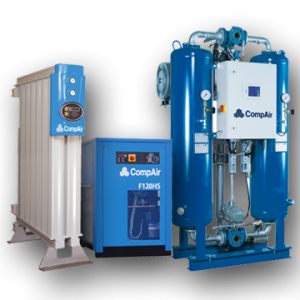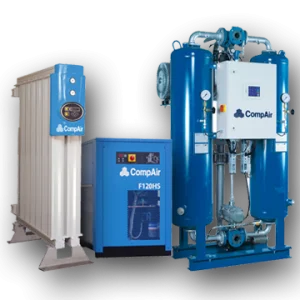

There are really only two ways to make a profit in business. Reduce your costs of production or Sell more of your products. The president of your company and your CFO are not doubt admonishing you to cut costs as much as you can.
I’m sure you’ve shared the same mission with your team. One of the biggest opportunities to cut costs is to reduce power consumption. And one of the biggest power users of power in most production plants is:
Your Compressed Air System
Compressed Air System design is a matter of not how much you have but how well you use it. It wouldn’t be uncommon for a business to be able to cut their compressed air demands by 20% just by eliminating leaks.
Beyond that there are opportunities to get the same production for a less costs. (Or create the capacity to scale up and keep your costs constant). Here’s how you can do that
Make Sure Each Piece Of Machinery Is Receiving The Right Pressure.
Unfortunately – when individual pieces of machinery aren’t getting enough air pressure, the maintenance team often just jacks up the air pressure until the complaints go away.
With only a couple of machinery operators complaining, if maintenance increases the system pressure – then it’s a given that a lot of other machinery is going to be receiving too much air.
Best practice to avoid this problem is to divide your compressed air system into zones and use regulators so that the pressure delivered to each zone matches the demand of the machinery. Depending on the complexity of your compressed air system you might want to engage an external compressed auditor (like Pye-Barker) to help guide you through this process.
After you’ve started to manage your air flow more systematically you’ll reduce your compressed air consumption – slashing your power bills by producing less compressed air.
Invest In Storage
Most compressed air systems like to be running at a constant speed, rather than whipsawing between full-load and unloaded every couple of minutes. Depending on the size of your compressor and the storage capacity of your current system this may not be possible.
When your compressors are flip-flopping between loaded or unloaded they consume a lot of power, and incur a lot of wear and tear. If that is the case it is wise to increase the storage capacity of your system to reduce power bills and break down.
You can do this with either dedicated storage, secondary storage or even offline high pressure storage.
Optimize Air Usage
Bearing in mind that it takes between 7 and 8 horsepower to deliver one pneumatic horsepower, it might pay to switch some of your air driven machinery out for more energy efficient options and use less compressed air. For example you might be able to:-
In the end the cost of a unit of compressed air is relatively static. The value you get from your investment in your compressed air is determined by how efficiently you use the air your produce. This is why compressed air auditing is essential for any business running complex compressed air systems. This advice goes double if you are considering adding more compressors to your system to accommodate ‘increased demand.’
There are always opportunities to improve your compressed air system and bring your costs into line with best practices. If you are considering investing in more air compressors or are looking to cut costs I’d recommend starting with an AirInsite compressed air audit. To arrange yours call 404-363-6000 or drop us a line sales@pyebarker.com and we can get the ball rolling.


